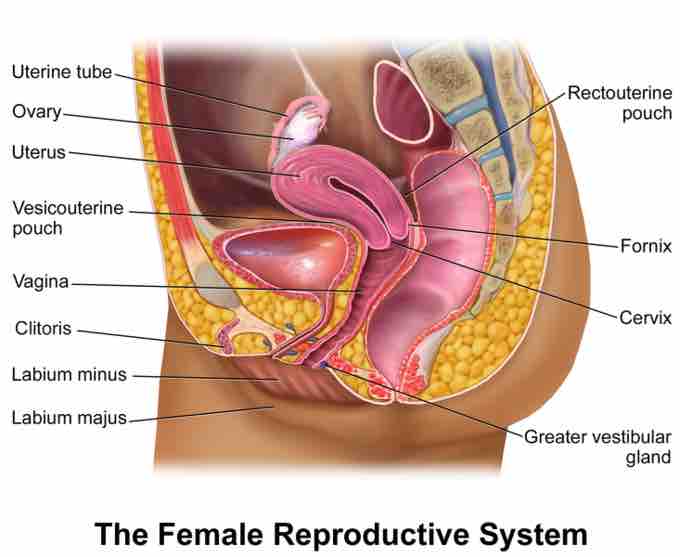The human female reproductive system (or female genital system) contains two main parts:
1) Uterus
*Hosts the developing fetus
*Produces vaginal and uterine secretions
*Passes the anatomically male sperm through to the fallopian tubes
2) Ovaries
*Produce the anatomically female egg cells.
*Produce and secrete estrogen and progesterone
These parts are internal; the vagina meets the external organs at the vulva, which includes the labia, clitoris, and urethra. The vagina is attached to the uterus through the cervix, while the uterus is attached to the ovaries via the fallopian tubes. At certain intervals, the ovaries release an ovum, which passes through the fallopian tube into the uterus.
If, in this transit, it meets with sperm, the sperm penetrates and merges with the egg, fertilizing it. The fertilization usually occurs in the oviducts, but can happen in the uterus itself. The zygote then implants itself in the wall of the uterus, where it begins the process of embryogenesis and morphogenesis. When developed enough to survive outside the womb, the cervix dilates and contractions of the uterus propel the fetus through the birth canal (vagina).
The ova are larger than sperm and have formed by the time an anatomically female infant is born. Approximately every month, a process of oogenesis matures one ovum to be sent down the fallopian tube attached to its ovary in anticipation of fertilization. If not fertilized, this egg is flushed out of the system through menstruation.
An anatomically female's internal reproductive organs are the vagina, uterus, fallopian tubes, cervix, and ovary. The external components include the mons pubis, pudendal cleft, labia majora, labia minora, Bartholin's glands, and clitoris.

Female Repro.png
Illustrated sagittal view of the female reproductive system.